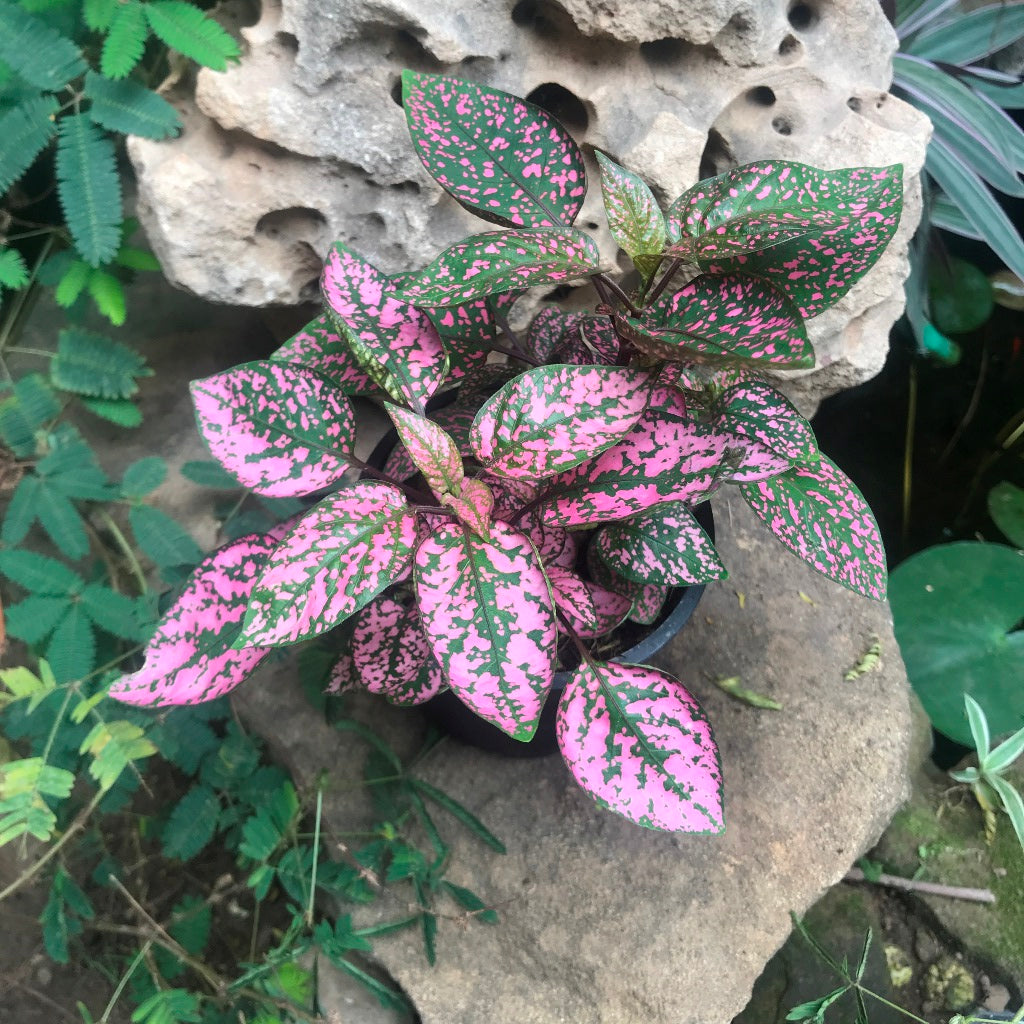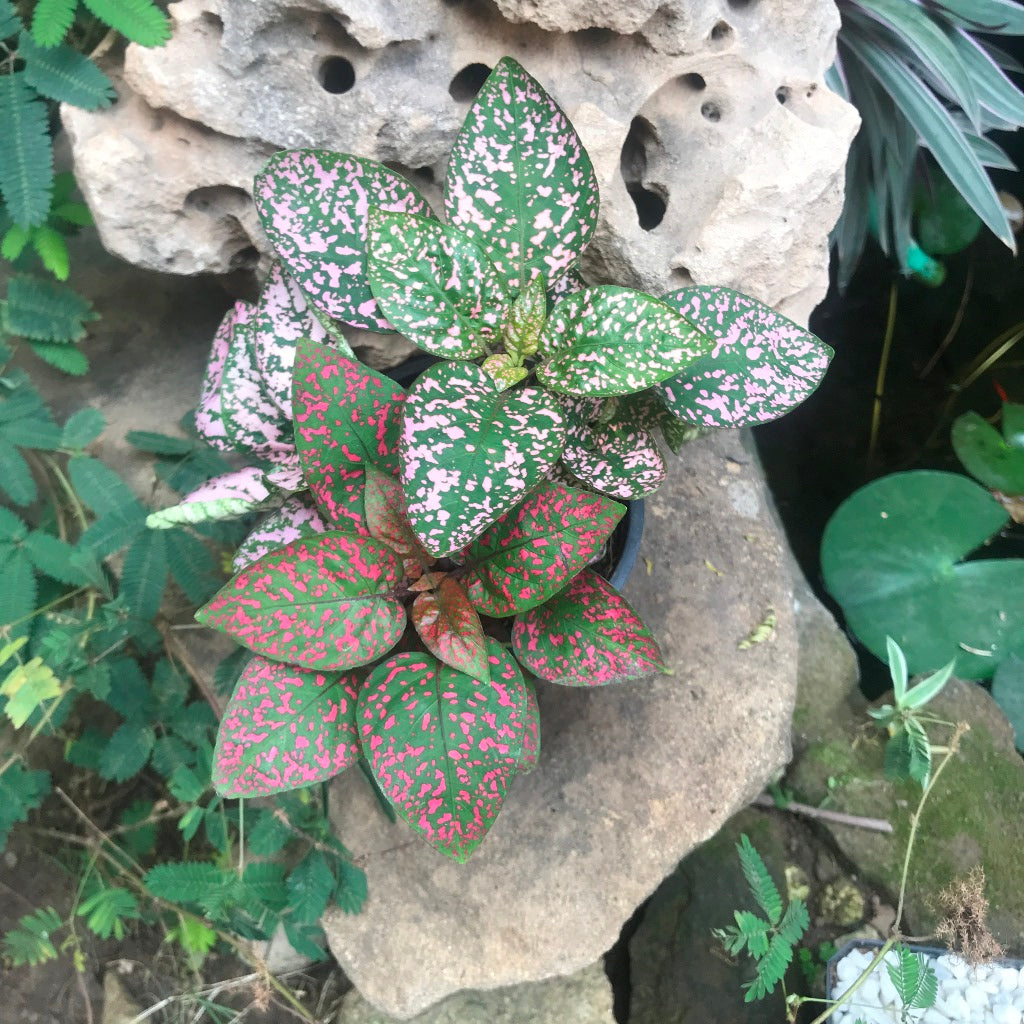Mosaic Plant
Family
Acanthaceae
Origin
Peru
Description
Fittonia are spreading evergreen perennials growing 10–15 cm (4–6 in) tall. They bear lush green leaves with accented veins of white to deep pink and have a short fuzz covering their stems. Small buds may appear after a time where the stem splits into leaves. Flowers are small with a white to off-white colour. Plants are best kept in a moist area with mild sunlight and temperatures above 55 °F (13 °C),
Envirnment
Growing nerve plants should be placed in a warm area, avoiding drafts that are too cold or hot, which will shock the plant, like rainforest conditions.
Fittonia nerve plant can tolerate bright light as well as shade but will truly flourish with bright but indirect light of 1-2 hours daily. Low light exposure will cause these plants to revert to green, losing the veins vibrant splashes of colour. It dislikes full sunlight, preferring bright, indirect sun, such as that offered by north-facing windows. It will also thrive under fluorescent lights.
Fittonia like well-drained moist soil, but not too wet. Water moderately every alternate day and let growing nerve plants dry out between watering. Use room temperature water on the plant to avoid shock. Fittonia is prone to collapse if it's allowed to dry out.
During its growing season, feed plants weekly with a weak dose of liquid fertilizer or a yearly dose of general-purpose fertilizer formulated for tropical plants.
Landscape Uses
Great for accents in container gardening.





















